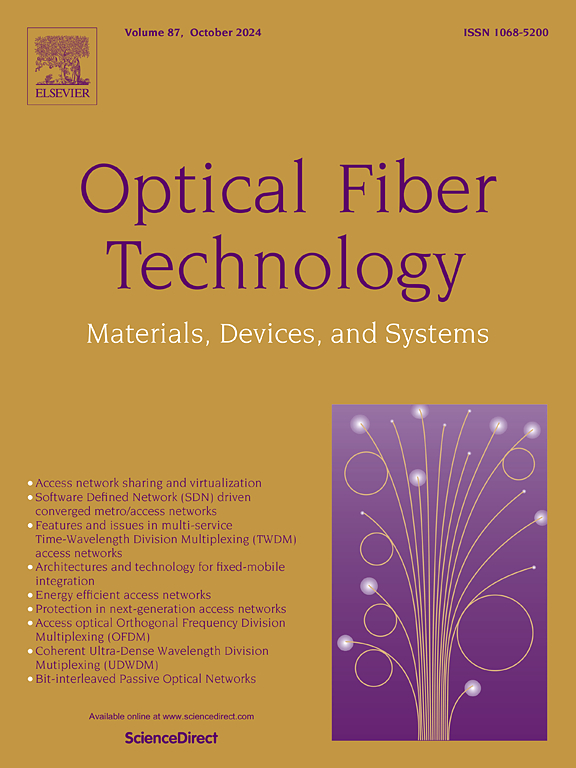Differential fiber optic humidity sensor based on superhydrophilic SiO2/polyethylene glycol composite film with linear response
IF 2.6
3区 计算机科学
Q2 ENGINEERING, ELECTRICAL & ELECTRONIC
引用次数: 0
Abstract
A differential fiber optic humidity sensor based on superhydrophilic SiO2/polyethylene glycol (PEG) composite film is presented. With exposure to humid air, the physical properties of SiO2/PEG composite film coated on the sensing region changes, disturbing transmission of evanescent wave of fiber and leading to change of the output light intensity of sensing fiber. The output light intensity of humidity sensor increases with the increase of relative humidity (RH), which is attributed to the expansion of polymeric film and less scattering of light. The sensor shows a linear response of the ratio of output light intensity of sensing fiber to that of reference fiber IS/IR to RH with a correlation coefficient of 0.991 in the range of 11–81 %RH. The ratio IS/IR is independent of the intensity of optical source, indicating that differential sensor structure enables humidity testing immune to instability of light source. In addition, the sensor possesses excellent reversibility, stability and repeatability.
求助全文
约1分钟内获得全文
求助全文
来源期刊

Optical Fiber Technology
工程技术-电信学
CiteScore
4.80
自引率
11.10%
发文量
327
审稿时长
63 days
期刊介绍:
Innovations in optical fiber technology are revolutionizing world communications. Newly developed fiber amplifiers allow for direct transmission of high-speed signals over transcontinental distances without the need for electronic regeneration. Optical fibers find new applications in data processing. The impact of fiber materials, devices, and systems on communications in the coming decades will create an abundance of primary literature and the need for up-to-date reviews.
Optical Fiber Technology: Materials, Devices, and Systems is a new cutting-edge journal designed to fill a need in this rapidly evolving field for speedy publication of regular length papers. Both theoretical and experimental papers on fiber materials, devices, and system performance evaluation and measurements are eligible, with emphasis on practical applications.
 求助内容:
求助内容: 应助结果提醒方式:
应助结果提醒方式:


